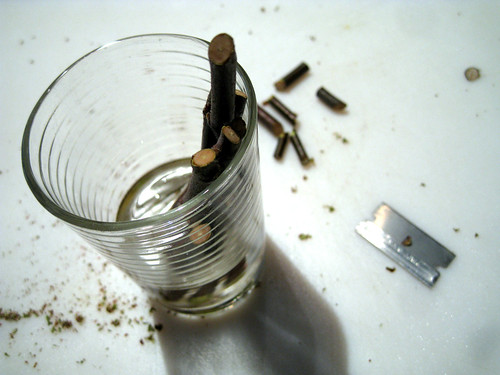 Plants seem uninterested in dates, instead using temperature and daylight hours and plant hormones to define “spring,” and many plants in my garden have decided that now’s the time. Though there doesn’t seem to be consensus – the asparagus seems to be abstaining so far – the rhubarb (one of the earliest spring indicator species in my garden) has decided to break dormancy and begin setting leaves, the plum tree is flowering, and surprisingly the mint has decided to start growing in earnest. I hold out hope that a Miracle March will deliver late and prodigious snow, but we’ll just have to see. In the meantime, there are garden chores to be done.
Plants seem uninterested in dates, instead using temperature and daylight hours and plant hormones to define “spring,” and many plants in my garden have decided that now’s the time. Though there doesn’t seem to be consensus – the asparagus seems to be abstaining so far – the rhubarb (one of the earliest spring indicator species in my garden) has decided to break dormancy and begin setting leaves, the plum tree is flowering, and surprisingly the mint has decided to start growing in earnest. I hold out hope that a Miracle March will deliver late and prodigious snow, but we’ll just have to see. In the meantime, there are garden chores to be done.
I spent the day yesterday taking cuttings of Ladyfinger and Flame Seedless grapes, black and red currants, gooseberries and yostaberries, and potting those up in the hopes that they will root and will eventually find their way into the food forest.
I also potted up the quince cuttings that came in the mail from Oregon. Quince is related to apples and pears, and is used as a dwarfing rootstock for pears. My plan, should the cuttings root, is to let some grow to be quinces – I’m intrigued by the “ancientness” of this fruit – and to use others as rootstock, to host grafts from the delicious 30-year-old-pear tree near the house.


Pingback: Listening to @Noiseprofessor talk about Forest Gardening « gforsythe.ca